Finding a house for sale with not one but three walled gardens could be classed as extremely fortunate. Add to that the bonus of fertile, free-draining, alluvial soil beneath your feet, and it seems Polly Nicholson hit the horticultural jackpot when she, her husband Ed and their four children, moved to Blacklands ten years ago.
Polly’s first priority was overseeing the renovation of the 18th-century house in Wiltshire. Then she set about restoring the gardens, working hand in hand with designer Arne Maynard to create spaces that served as both a family garden and a workspace for Bayntun Flowers, Polly’s artisan flower-growing and floristry business. She knew from the start that she didn’t want anything that shouted ‘look at me’, a garden that would both echo and frame the beauty of the 120-acre estate around it, and the Malborough Downs beyond. “I wanted soft forms and something that linked with the landscape, so there is a lot of cloud hedging and topiary,” she adds.
In April, it is the garden’s breathtaking display of blossom that first catches the eye. There are curving rows of pleached crab apple Malus ‘Evereste’, echoed by the established fruit trees that were carefully incorporated into Maynard’s design. The beds are lit with the contrasting tones of the pink and green tulip ‘Virichic’ and the deep, dark ‘Black Hero’, all set into a patchwork of bee-friendly oreganos (Origanum laevigatum ‘Hopleys’ and lime-green Origanum vulgare ‘Thumble’s Variety’) in beds edged with soft mounds of Daphne x transatlantica Eternal Fragrance (= ‘Blafra’) and Teucrium x lucidrys.
Although a separate flower field provides space for Polly’s cut-flower-growing business, she also picks from her own gardens. Bayntun Flowers supplies flowers wholesale to select florists in London and in Wiltshire, as well as creating bespoke displays for events. Polly is constantly experimenting with rare, new and unusual flowers and bulbs, assisted by her head gardener and brilliant plantswoman Hannah Gardner. “The people I am supplying don’t necessarily want bulk, they just want something different,” she concludes.
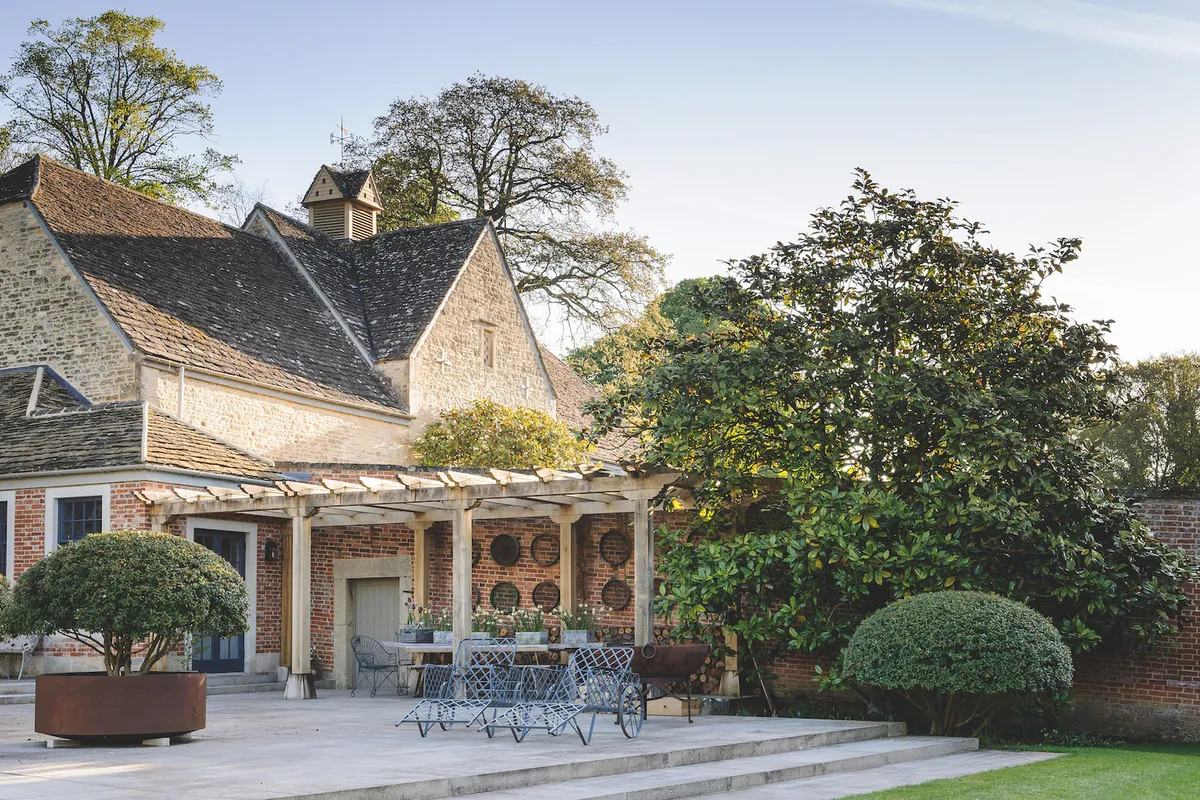
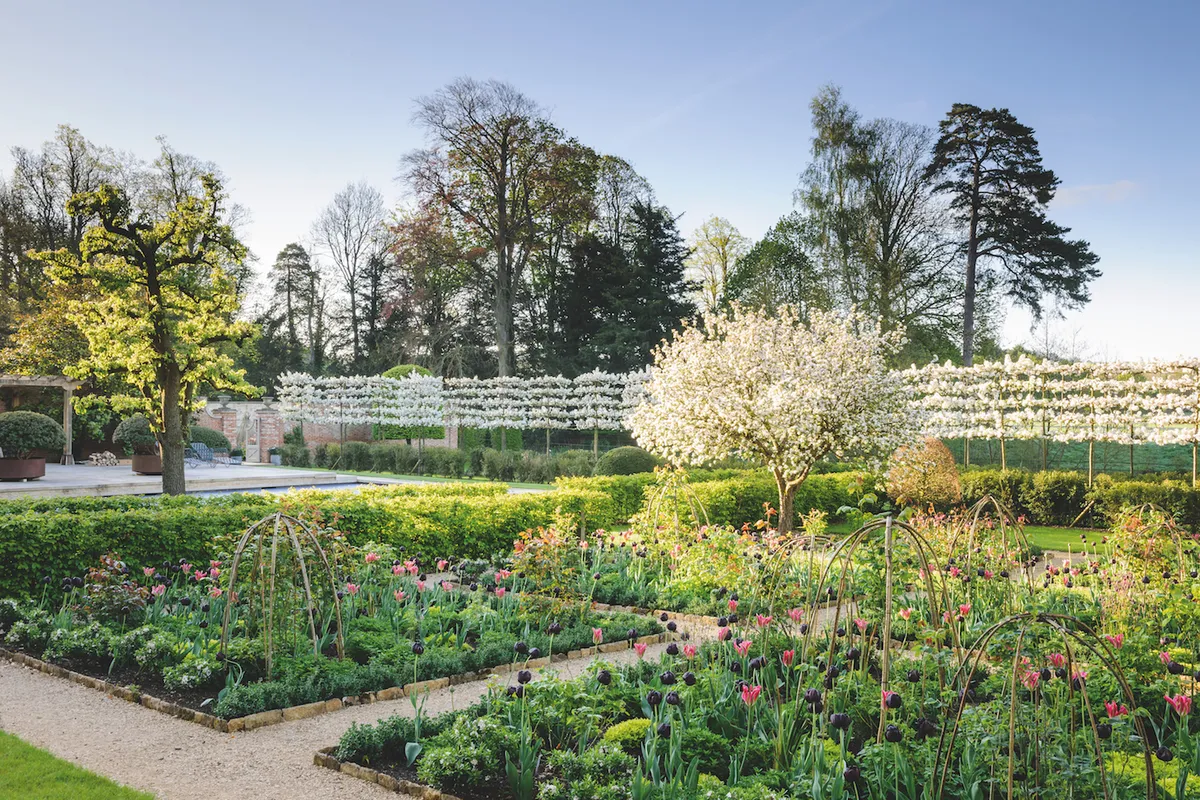


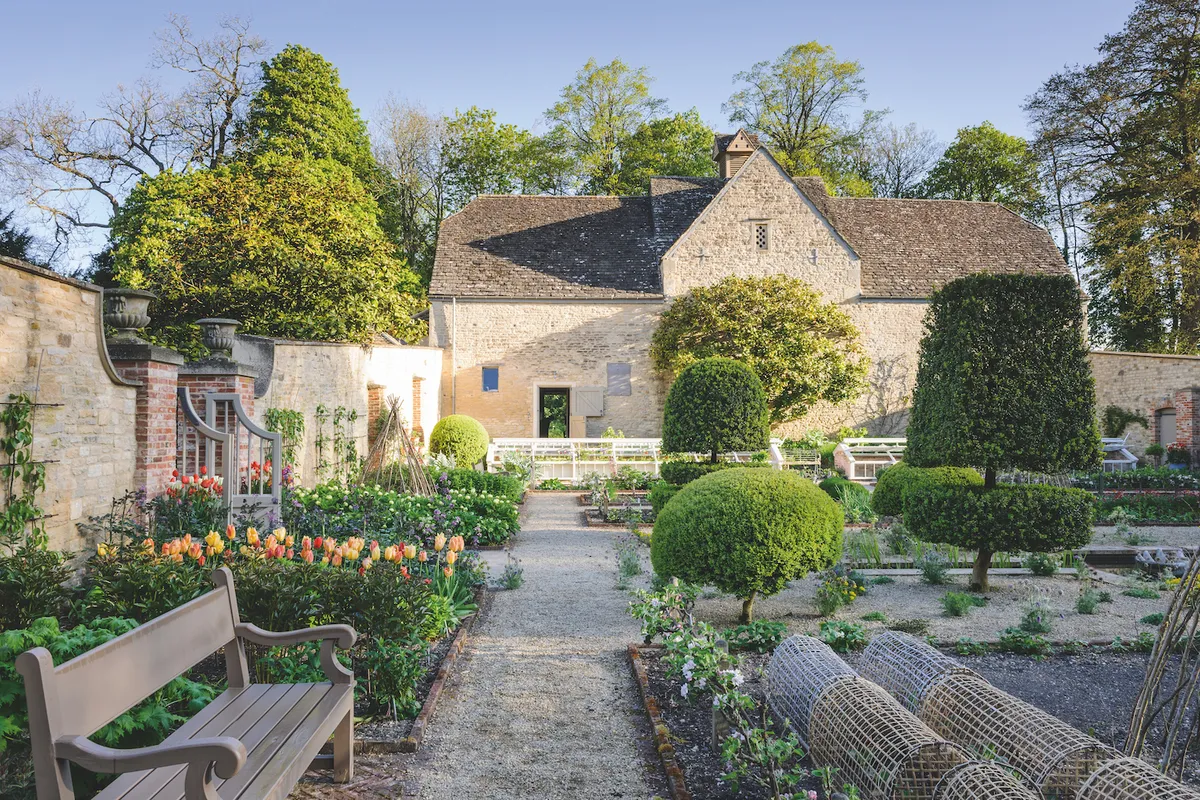
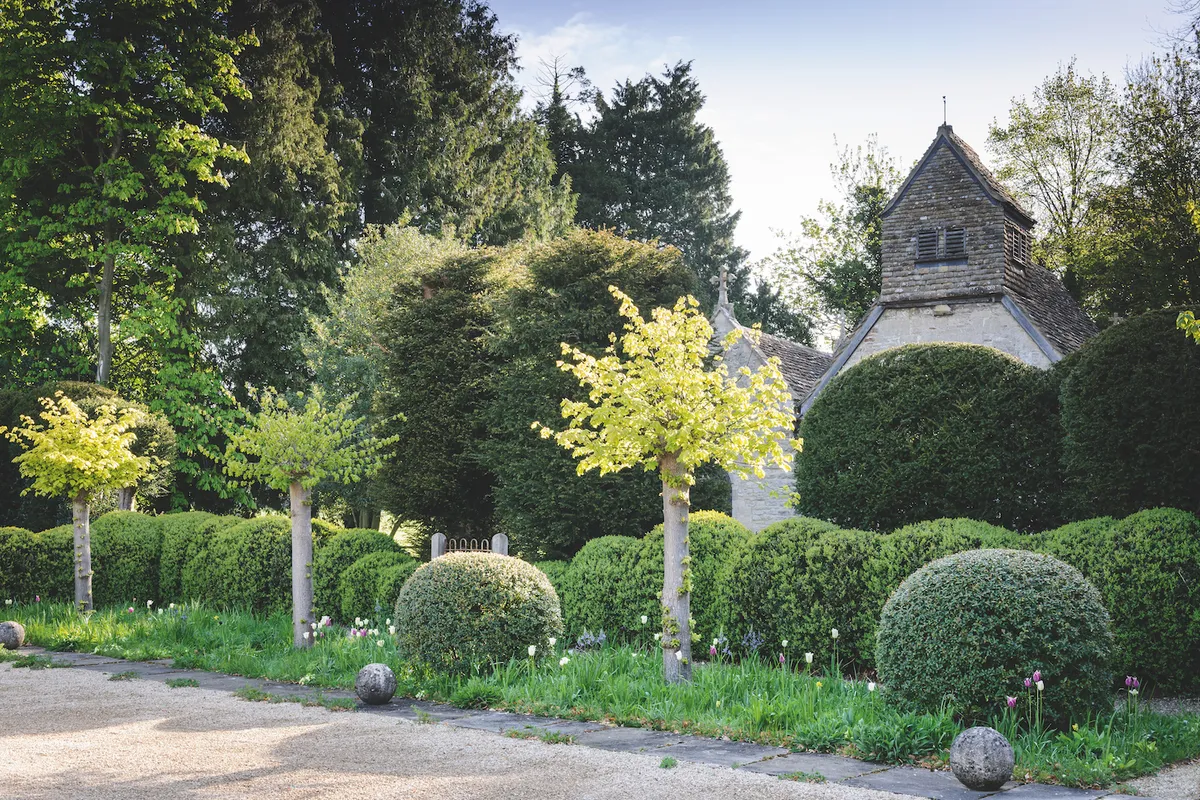
RARE TULIPS
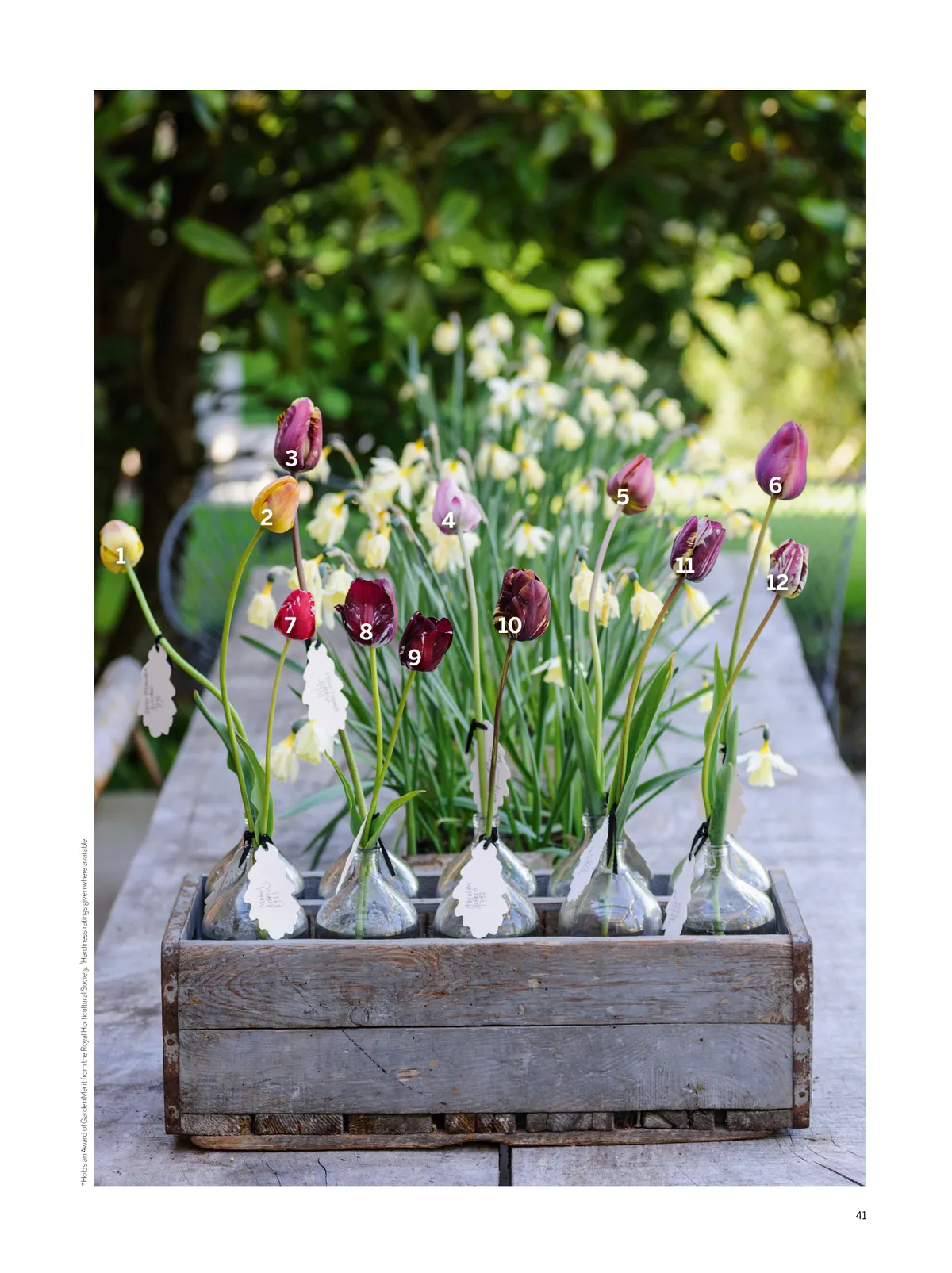
Preserving and expanding her collection of English florists’ tulips is a labour of love for Polly. She loves the jewel-like tones of these garden antiques, some of which have pedigrees dating back to the 18th century. The streaked and splashed petals of the ‘broken’ forms are caused by infection by the tulip breaking virus; the taller, single-tone cultivars are the ‘breeders’, grown to be deliberately infected in search of new breaks. “We had an amazing break this spring from a ‘Fairy Nymph’ (see above) identified by [writer and gardener] Anna Pavord,” says Polly. “We’ve potted the bulblets on and we’re trying to create a tiny stock. I love the fact that we are preserving a thread of that history.”
USEFUL INFORMATION
The garden is not generally open to the public aside from occasional open days for charity. Bayntun Flowers also runs seasonal events.